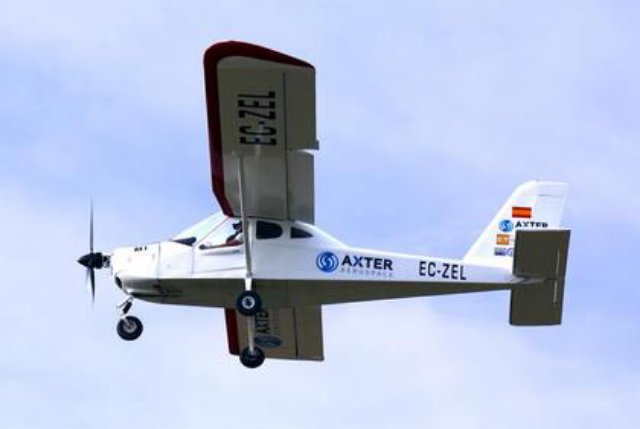 Researchers at Universidad Carlos III de Madrid and the AXTER Aerospace firm have developed an electric propulsion system to install in small gasoline-powered planes for extra power and range in emergency situations. This new hybrid system could prevent 600 accidents a year.
Researchers at Universidad Carlos III de Madrid and the AXTER Aerospace firm have developed an electric propulsion system to install in small gasoline-powered planes for extra power and range in emergency situations. This new hybrid system could prevent 600 accidents a year.
The basic goal of this project is to improve the safety of light and light-sport aircraft, that is, two- and four-passenger planes weighing a maximum of 750 kilograms.
“We are trying to saves lives and prevent accidents related to loss of power during flights, when the engine fails or the fuel runs out,” said one of the inventors, Miguel Ángel Suárez, from AXTER Aerospace, the company which collaborated with UC3M to develop this new system. “We mustn’t forget that every year in Europe and USA there are an average of 600 accidents, 70 deaths and 24 million euros in losses recorded,” he noted.
The idea is to equip the plane with an extra electric engine on the propeller. “If there is a problem with the main engine, this electric engine will start to function, which will provide an additional range of about 20 kilometers, enough for the pilot to land safely,” said Andrés Barrado, head of the UC3M Electric Power Systems group and another promoter of this invention.
The new system has an electric engine which is connected to the conventional engine, a high-efficiency lithium battery and an electronic system that draws energy from the battery and adapts it to the needs of the plane. It also has a battery charger which operates during the flight.
“We maximize the capacity of the battery in generating movement with the electric engine, and we have found that we can also use the system as a hybrid for light aircraft: the pilot can activate it when she wants, adding up to 40 horsepower for take-offs or whatever is needed,” said Daniel Cristobal, from AXTER Aerospace and an alumnus of the UC3M. This way, it could be used as if it were an electric turbo to increase the power of the aircraft in certain maneuvers.
This system, which is being marketed and patented internationally, can be installed in all light aircraft, new or already operating. Also, it might eventually be applied to other types of aircraft, such as gyroplanes, gliders, drones and other unmanned aerial vehicles.
In addition to saving lives and avoiding financial losses resulting from accidents, its architecture reduces the airplane’s operating and maintenance costs, lowers fuel consumption and reduces the emission of greenhouse gases and noise pollution.
Source: Product Design & Development
